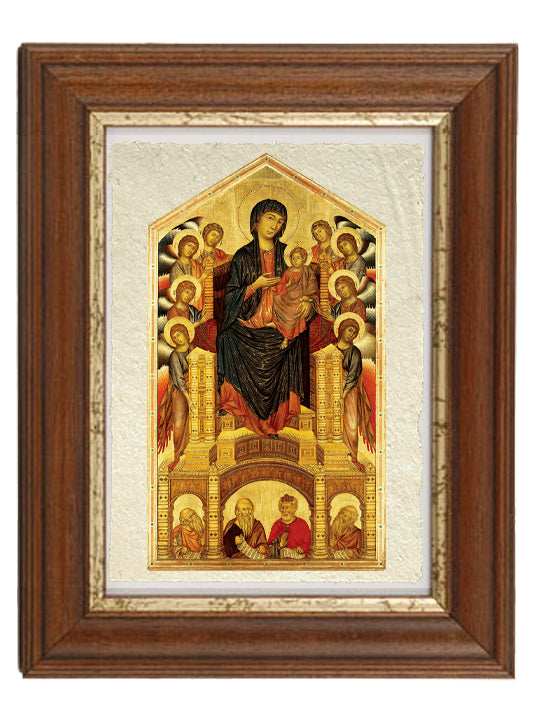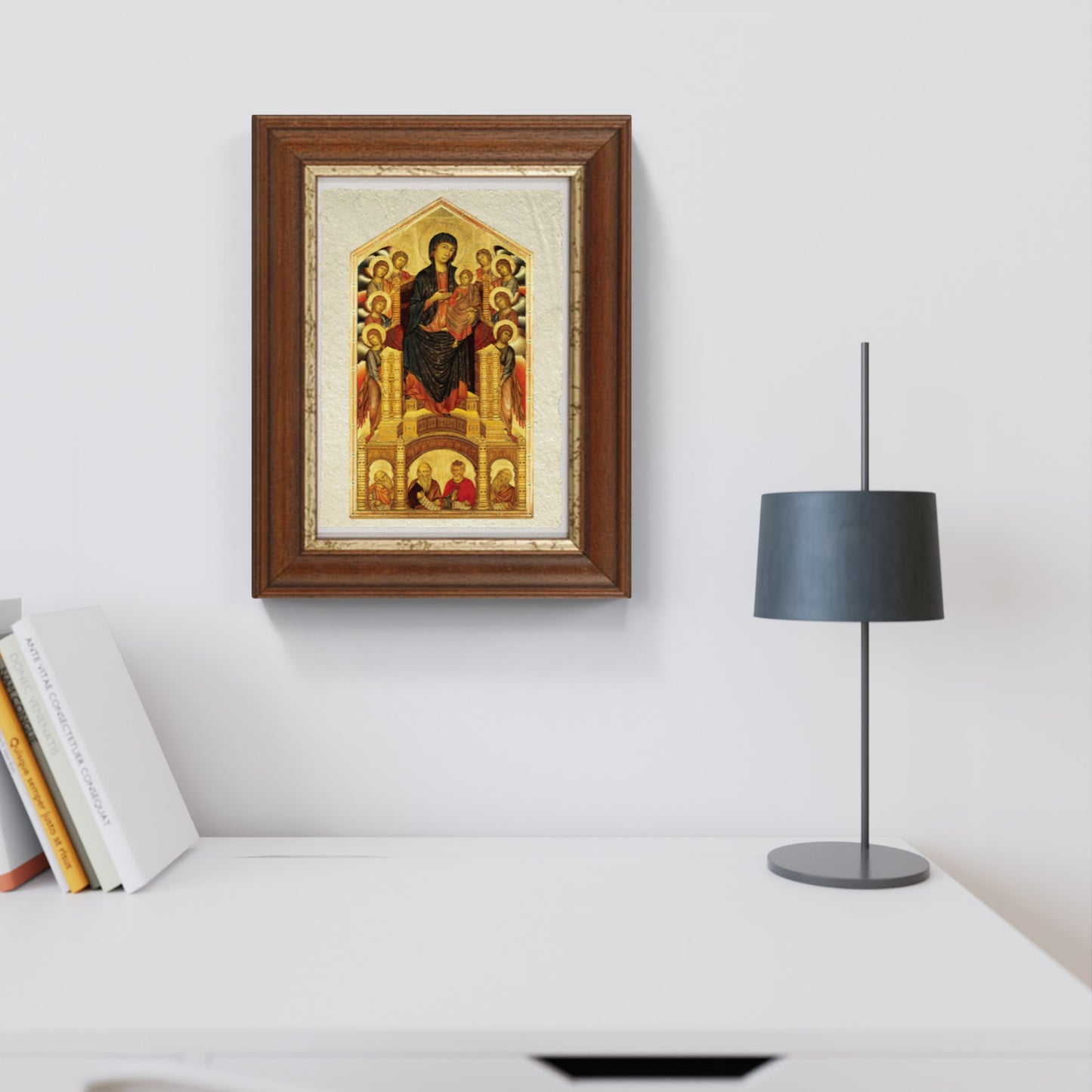Madonna of the Holy Trinity, or Majesty of the Holy Trinity, by Cimabue (1280-1300)
Madonna of the Holy Trinity, or Majesty of the Holy Trinity, by Cimabue (1280-1300)
Couldn't load pickup availability
SKU:I4O5P6A7S8D9F
WHY BUY
- Magnificent and real colors
- It makes any room elegant
- Perfect for a prestigious gift
CHARACTERISTICS
Print on handmade Amalfi paper with frame
Sheet size: 30 x 42 cm
With frame: 32 x 44 cm
Material: work printed on very fine handmade Amalfi paper with fringed edges, handmade beech wood frame
DO YOU WANT INFORMATION ON THE PRODUCT? WHATSAPP CHAT WITH A CONSULTANT
The work
The gilded decorations and intricate details of Mary's robe in Cimabue's Madonna of the Trinity reflect not only the artist's technical mastery, but also the Byzantine influence that permeated 13th-century Italian painting. The use of golden damask, visible on the robes of Mary and the Child, creates a sense of richness and sacredness, while the multicolored wings of the angels, which seem to lift the throne, add an ethereal and celestial dimension to the scene.
Cimabue breaks with Byzantine tradition through the innovative use of perspective: the curves of the throne and the placement of the angels around it create an illusion of spatial depth that makes the divine figures more accessible and realistic. The complexity of the composition is further accentuated by the four Old Testament prophets – Jeremiah, Abraham, David and Isaiah – located below the throne, each identified by scrolls with biblical writings that anticipate the coming of Christ. These details not only enrich the work with a sense of historical and spiritual continuity, but also enhance the prophetic and genealogical role of the Virgin and Child.
The inclusion of these elements is not accidental; it probably responds to a specific request from the clients, the religious order of Vallombrosani. The prominent position of the Madonna and Child, framed by angelic and prophetic figures, highlights their centrality in Christian devotion and invites the faithful to an act of collective adoration during the Mass. The preciousness of the painting lies in the combination of symbolism and technical innovation. Cimabue, despite being inspired by Byzantine art, manages to create a leaping image, with the illusion of the movement of angelic wings and the enigmatic gaze of the Madonna herself, who even in its fixity it seems alive.
How reproductions are made


Scopri i pregiati materiali di Trizio Editore
Carta di Amalfi fatta a mano, cornice in legno di faggio e vetro museale. Guarda i particolari dei prodotti che renderanno la tua casa più elegante e preziosa.


